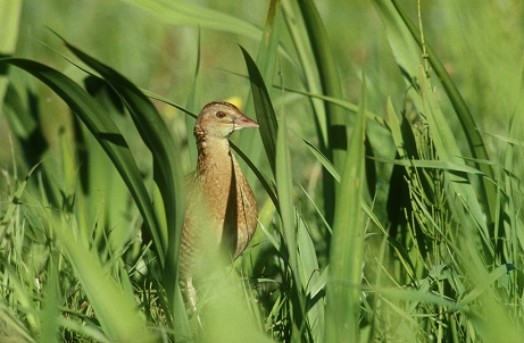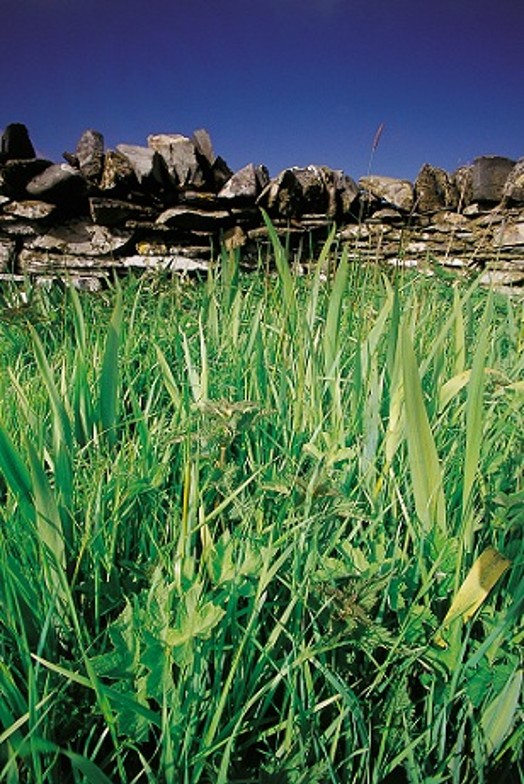Supporting guidance for Management of Cover for Corncrake
Date published: 30 March, 2015
Note: In September 2023, references to Scottish Natural Heritage have been updated to NatureScot.
Corncrakes are a ground-nesting bird, related to moorhens and coots but they live on dry land. They are a summer visitor to Scotland, over-wintering in Africa.
To survive and breed successfully, corncrakes need:
- safe nesting habitat in crops and hay / silage fields
- tall vegetation (ideally over 20 centimetres in height) that provides cover during breeding and chick rearing

Corncrake – Credit: Chris Gomersall – © RSPB images
The aim of this option is to provide tall vegetation cover throughout the breeding season. Corncrakes use long vegetation as cover when they return to the UK from their wintering grounds in April and May, and for breeding throughout the summer. Generally, they need vegetation that is over 20 centimetres in height.
Cover in spring, early cover, is usually provided by tall herbs with an early growing season such as iris, nettles and cow parsley. Late cover is provided by long grass and herbs.
What needs to be done
Excluding livestock from fields from 1 March to 30 September will allow herbs and grasses to grow to a suitable height without being grazed back by livestock.
Ideally, vegetation should be 20 centimetres in height by the first week in May. Adding nutrients to the plot, using rotten silage bales, farmyard manure or seaweed can help to achieve this. Nutrients should be added to the plot before 15 March.
Corncrakes will not breed in thick, rank vegetation. Therefore, it is very important that plots are grazed back at the end of the season. If grazing alone cannot remove annual growth, approval to cut the sward after 1 October should be sought.
Some plots dominated by tall herbs rather than grass may require only low levels of grazing.
Which fields to choose

The site selected for the Management of Cover for Corncrake option should be adjacent to land entered in to the Corncrake Mown Grassland option unless you have received prior approval to use an alternative location as part of the application process. Your local corncrake advisor can advise on whether an alternative plot is appropriate.
Where possible, choose a sheltered, low lying area such as the lee of drystane dykes, rocky outcrops outcrops or ruined walls / buildings.
Tall herbs with an early growing season should occupy at least 30 per cent of the sward (by area) distributed across the field, and not confined exclusively to field margins or small parts of the field. These may include iris, nettles, meadowsweet, cow parsley, hogweed, reed sweetgrass, common reed and butterbur. This is not an exhaustive list of suitable plants so contact your local advisor if you have a query.
Cover plots should be at least 0.15 hectares in size to provide safe havens for corncrake in periods when the vegetation in surrounding fields may be too short to provide cover.
How to increase the success of this option
This option benefits corncrake most if it is used in combination with one or more of the following options:
To increase the area of cover plants in a field, you can apply for the Creation of Cover for Corncrake capital item to help you to establish additional clumps of tall plants in the field.
Further information
For further information on corncrake conservation you can contact the RSPB advisory services on 0131 317 4100 or your local NatureScot office.
